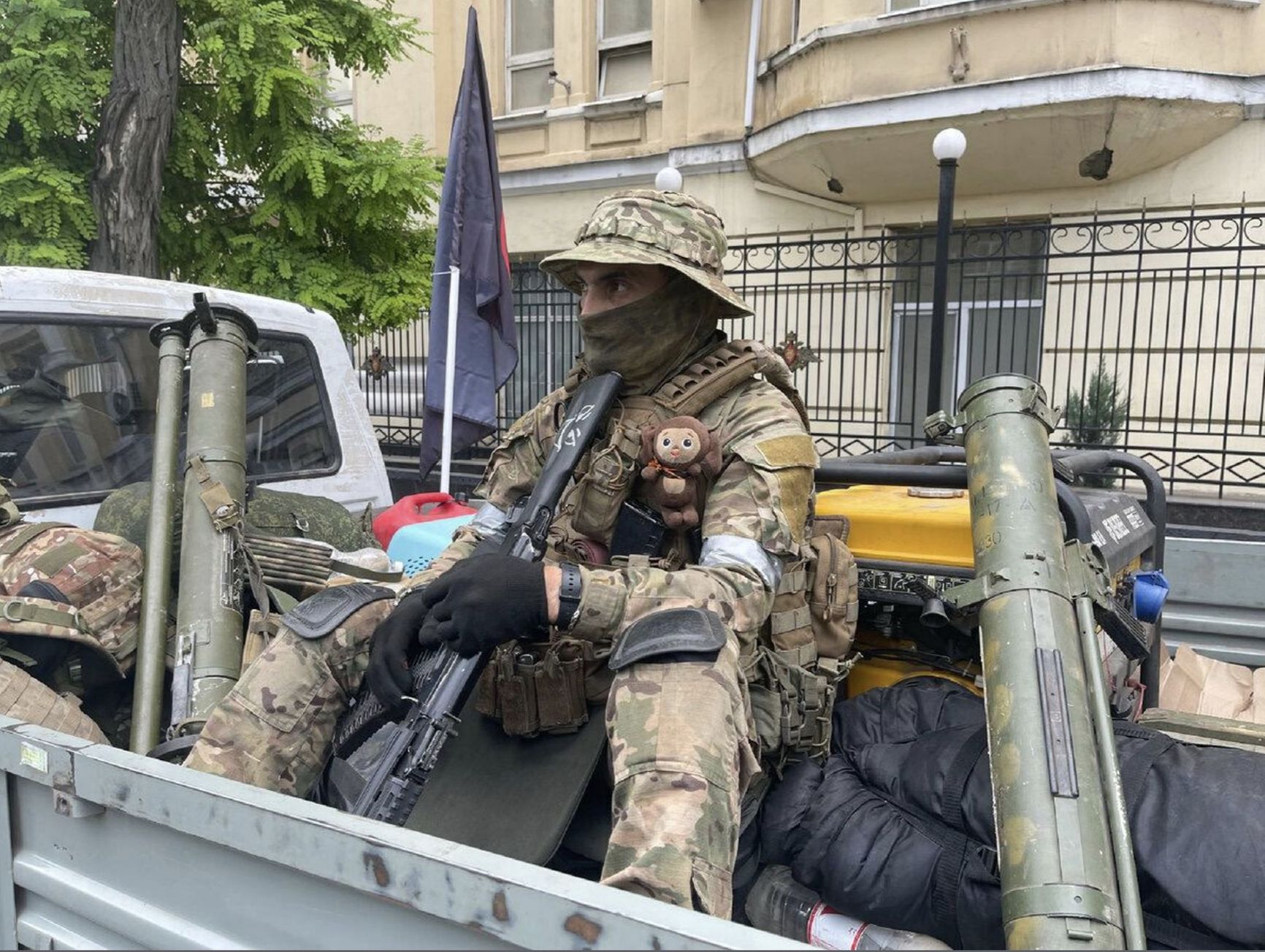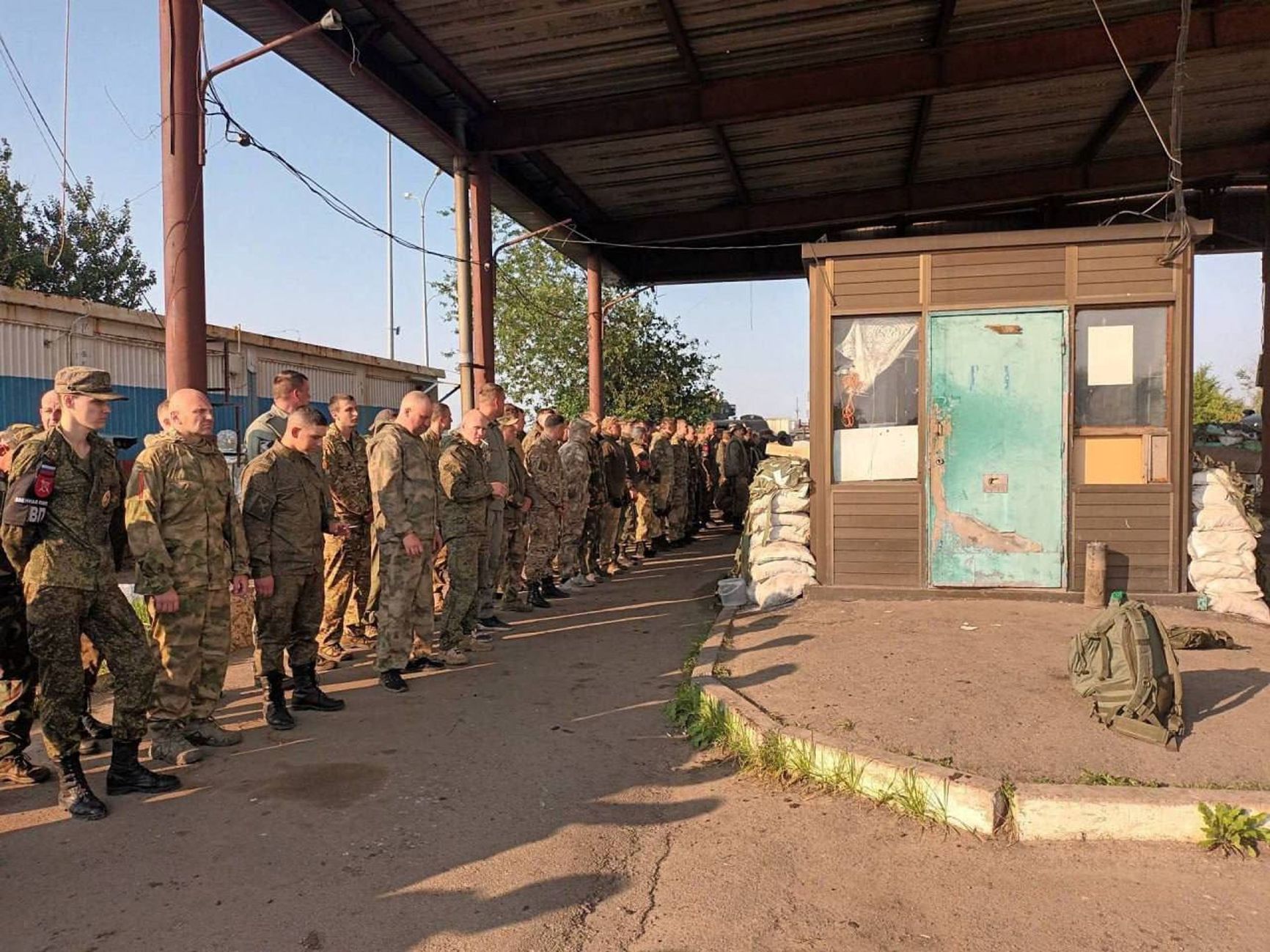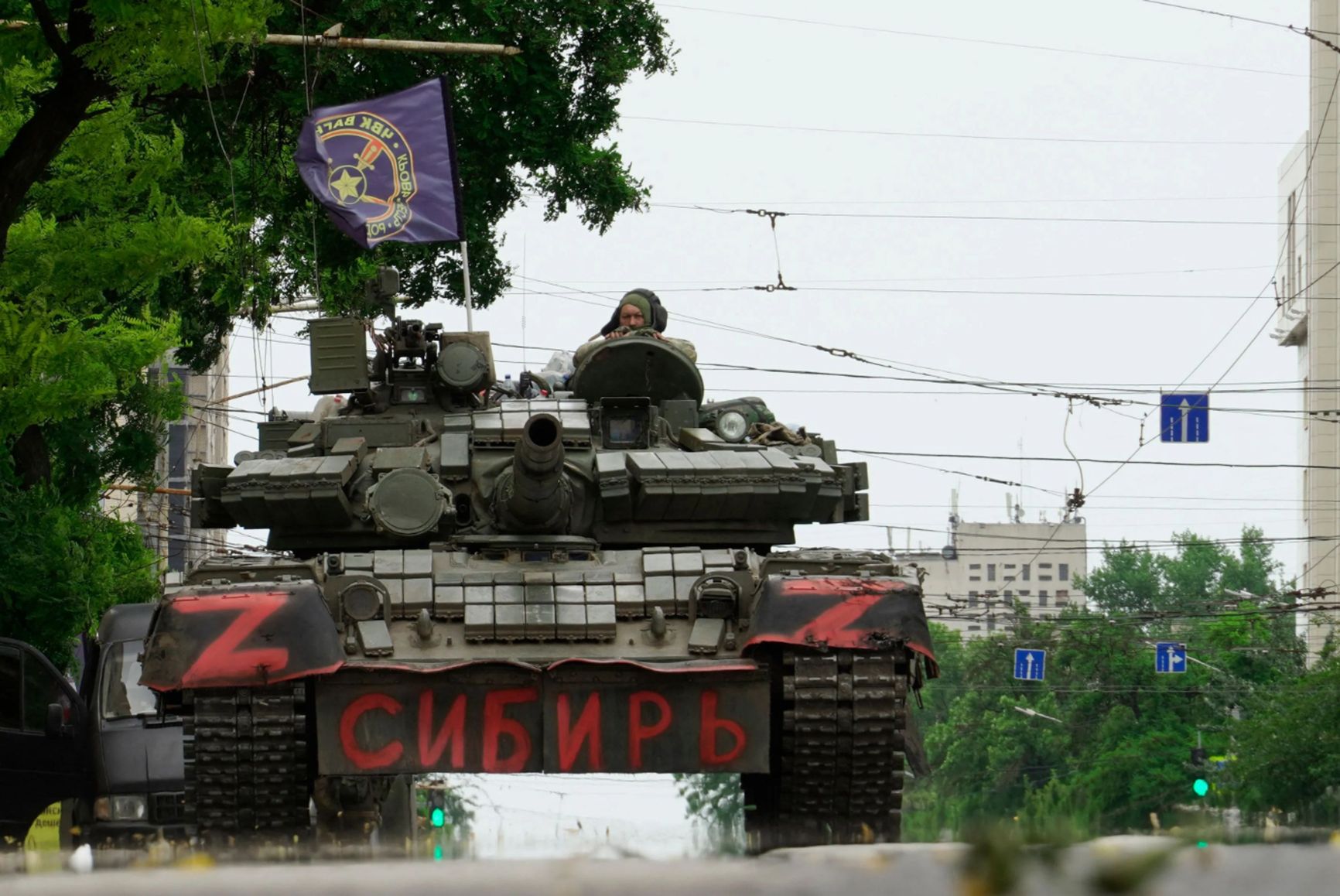

In the late evening of June 23, Evgeny Prigozhin announced a military campaign by the Wagner private military company, citing the pursuit of 'justice in the army.' After 24 hours, he informed of the turnaround of Wagner's forces, who had managed to seize control of the Southern Military District headquarters in Rostov-on-Don and advanced to the Tula region, led by Prigozhin's long-time associate Alexey Dyumin. This swift 24-hour rebellion appears to be the most significant challenge to Vladimir Putin's established regime. The Insider has compiled 10 key observations on the mysterious rebellion, covering Prigozhin, the Wagner PMC, Russian security forces, and the overall state of the country.
Content
No Moscow defenders
Kadyrovites are not just TikTokers but also slowpokes
Servicemen surrender and refuse to follow orders
Just in case, Voronezh will be bombed
Halting a column equipped with anti-aircraft defense systems is difficult
The Wagner private military company turned out to be not so private
The word of the President is above the law in Russia
Russian military personnel can be killed with impunity (but not by everybody)
The GRU had been working with Wagner PMC since 2014
The Russian Ministry of Defense is hiding the bodies of killed soldiers
No Moscow defenders
The Wagner PMC rebellion has revealed the vulnerability of Russian rear areas. The mercenaries first crossed the 'old' Russian-Ukrainian border (despite the formal annexation of the Luhansk region, there are still checkpoints), then took control of the Southern Military District headquarters (which also serves as the main command post for troop operations in Ukraine). They blockaded several administrative buildings in central Rostov-on-Don and nearly reached Moscow.
According to Evgeny Prigozhin, the advance units were 200 km away from the capital (although the northernmost point where the presence of the mercenaries was confirmed was the village of Krasnoye in the Lipetsk region, 380 km from the Moscow Ring Road). Overall, as Prigozhin stated, the Wagner forces covered 780 km in a day (although this figure seems somewhat exaggerated, they certainly covered at least 500 km). However, the Wagner fighters encountered little resistance almost everywhere, except for a couple of incidents at the border crossing and in the Voronezh region. Apparently, the uniformed agencies simply could not locate and promptly deploy any reasonably combat-ready army units equipped with heavy weaponry such as artillery and tanks.

In the end, the honorable mission of stopping the columns heading towards the capital was entrusted to tractor drivers who were digging up roads with their buckets, and to traffic police crews attempting to block the passage with trucks and construction equipment. Z-channels made fun of the “feeble” checkpoints of the Russian National Guard, the heaviest weaponry being a 40mm automatic grenade launcher AGS-17, which was useless against tanks (although anti-tank weapons were observed at some checkpoints). The only recorded movement of any heavy equipment in central Russia on June 24 was a battery of six D-30 howitzers reportedly relocated from the Nizhny Novgorod region.
The mission to stop the advancing Wagner PMC columns towards the capital was entrusted to tractor drivers and traffic police crews
In light of this, Alexander Lukashenko's explanation doesn't seem entirely far-fetched, suggesting that only the threat of deploying a Belarusian brigade to defend Moscow convinced Prigozhin to mobilize the columns. On the evening of June 24, five empty Russian Aerospace Forces' Il-76 military transport planes did indeed arrive in Belarus, only to depart back empty the following day.
Kadyrovites are not just TikTokers but also slowpokes
An amusing incident occurred with the Chechen units within the Russian National Guard, famously recognized as the personal guard of regional leader Ramzan Kadyrov. They were likely the only ones taken out of the Ukrainian combat zone and sent to Rostov-on-Don. However, during the time the Wagner PMC forces were present in the city, the Kadyrovites either took their time getting there or got stuck in traffic. In the end, they failed to reach Rostov and engage with the Wagner PMC.
However, they unexpectedly found themselves on a bridge in the suburb of Kolomna near Moscow, where they recorded a ridiculously pompous staged video, reminiscent of their earlier TikTok-inspired antics that gained them fame at the beginning of the Ukrainian campaign. In the video, the soldiers of the 249th Special Motorized Battalion “Yug” from the 46th Separate Special Purpose Brigade of the Russian National Guard promise to “bury the traitors, the homeland's betrayers” with the “help of the Almighty Allah” and chant slogans like “Akhmat is power” and “Allahu Akbar.”
It's worth noting that regardless, they would not have been able to carry out their threats since the federal highway M-4, chosen by the Wagner PMC as their route towards Moscow, does not pass through Kolomna.
To further complicate the situation, Vladimir Putin made a perplexing statement on June 27 during a peculiar ceremony of inspecting regime loyalist forces on Cathedral Square in the Kremlin. He claimed that there was no need to withdraw combat units from the area of the SMO. In that case, either the Chechen units of the Russian National Guard were sent to Rostov-on-Don and Kolomna from a different location (contradicting the statements of the commander of the “Akhmat” special forces), or Putin does not consider them fully-fledged “combat units” (which aligns with the reality to some extent).
Servicemen surrender and refuse to follow orders
A significant number of servicemen from different uniformed agencies simply refused to obey orders. In Rostov-on-Don, the National Guard troops ignored the passage of the Wagner PMC columns, and at the Bugaevka border crossing, they surrendered along with the border guards. Against the backdrop of these events, the celebrations in the Kremlin to allegedly commemorate the suppressed rebellion sparked outrage among the Z-channel audience.
In Rostov-on-Don, the National Guard troops ignored the Wagner PMC columns, and in Bugaevka, they even surrendered
Prigozhin himself mentioned a pilot “from the FSB” who refused to perform an airstrike on a column. According to various Z-channels, the border guards did not attempt to stop the superior forces of the mercenaries, and at least four Russian Aerospace Forces crews refrained from using firepower, citing the presence of civilian vehicles near the Wagner PMC as an excuse.

Even Z-activists like Aviation Colonel Viktor Alksnis find these arguments weak. Alksnis rightly points out that Russian pilots did not take into account the risks to the civilian population when striking Ukrainian Armed Forces positions in Mariupol, Maryinka, Avdiivka, and other cities.
The best example of the mindset of the siloviki during the rebellion is shown in the case of the Rostov region. Local traffic police demanded bribes from motorists for passage on closed roads, threatening to divert them on a 1,500 km detour if they refused.
Just in case, Voronezh will be bombed
Amidst the uprising, reports emerged of airstrikes targeting the Voronezh region, validating the notorious meme phrase “bombing Voronezh.” Although the attack on the oil depot on the city's outskirts could be attributed to an errant missile fired by the Wagner Private Military Company's surface-to-air system, deliberate utilization of high-explosive aviation bombs (FABs) by the Russian Aerospace Forces was witnessed near the town of Boguchar along the major highway.
However, the airstrikes had no significant impact on the movement of the rebel columns. According to the OSINT project Oryx, only one armored vehicle, two pickups, and a truck were destroyed (out of the estimated 1,000 vehicles participating in the march towards Moscow). Shocking footage confirms at least two casualties among the Wagner PMC ranks as a result of the strikes. Additionally, five civilians were injured.
Halting a column equipped with anti-aircraft defense systems is difficult
The Wagner mercenaries demonstrated their mastery of maneuvering mechanized columns on highways under limited air resistance. Within just a day, they managed to shoot down at least six helicopters and an IL-22 command and control aircraft.
Their advantage was also due to the fact that the mercenaries were moving among civilian vehicles, using trucks and unmarked passenger cars. In the absence of precision-guided weaponry, the aviation forces could only resort to using high-explosive bombs, causing inevitable casualties among the civilian population. On the ground, there were no loyal Kremlin forces equipped with comparable weaponry and resources.

Paradoxically, the swift advancement of the Wagner PMC columns across Russia likely aligned with the perceptions of the Russian military-political leadership. However, instead of achieving their goal of “Kiev in three days,” the mercenaries under Prigozhin's command nearly executed an operation of “Moscow in one day.”
Instead of achieving their goal of “Kiev in three days,” the mercenaries under Prigozhin's command nearly executed an operation of “Moscow in one day”
The Wagner private military company turned out to be not so private
On June 27, Vladimir Putin held a meeting with the Ministry of Defense personnel in the Kremlin, where he shared incredibly intriguing information about the finances of the Wagner PMC. It was revealed that the purportedly “private military company” had been fully funded by the state budget during the war against Ukraine. According to Putin, from May 2022 to May 2023, more than 86 billion rubles ($966 million) were allocated for the financial allowances and incentive payments (presumably referring to bonuses for destroying enemy equipment) of the Wagner mercenaries. Insurance payouts for the same period exceeded 110 billion rubles ($1.236 billion). Thus, over the course of a year of combat operations in Ukraine, the Wagner PMC cost Russian taxpayers almost 200 billion rubles ($2.248 billion), and that's without considering the supply of weapons, military equipment, and ammunition, which, as known, fell under the responsibility of the Ministry of Defense.
Over the course of a year of combat operations in Ukraine, the Wagner PMC cost Russian taxpayers almost $2.2 billion
Furthermore, Prigozhin's company, Concord, earned 80 billion rubles $900 million) from state contracts for supplying products to the Voentorg and for organizing military catering. Putin, while discussing this, expressed a touching hope that “during these operations, no one stole anything or, let's say, not as much.”
It is totally unclear how an entirely illegal armed formation was financed from the state treasury. Moreover, Evgeny Prigozhin himself stated that the Wagner PMC always used cash, and when they were operating in Africa, Ukraine, and “giving America nightmares,” cash was “okay for everybody.” This means that Putin acknowledged the existence of an official mechanism for converting budgetary funds into cash.
The word of the President is above the law in Russia
It may not be the most sensational revelation in the 24 years of Putin's rule, but it is still quite revealing and somewhat disheartening. In his address on the morning of June 24, the President of Russia threatened “those who consciously embarked on the path of betrayal, those who prepared an armed rebellion, resorted to blackmail and terrorist methods” with inevitable punishment and a response “before the law and the people.”
Just a few days later, he was expressing gratitude to the soldiers and commanders of the Wagner PMC who had “come to their senses” and “stopped at the final line.” Putin also confirmed that he had given a promise not to prosecute the participants of the rebellion, giving them a choice: to sign a contract with the Ministry of Defense, return home to their families, or “go to Belarus.”
In fulfilling the promise of the national leader, the FSB closed the criminal case regarding the armed rebellion, as the participants had “ceased actions directly aimed at committing a crime.” However, from the perspective of current legal norms, an “armed rebellion” falls under the category of so-called “formal” elements of a crime. They are considered complete from the moment certain actions are committed, regardless of whether any consequences occurred. Therefore, the stated reason, “participants of the armed rebellion ceased actions directly aimed at committing a crime,” is not provided for in Russian legislation.

In light of this, the usually outspoken propagandist Margarita Simonyan, who wisely remained silent throughout the active phase of the rebellion, provided a splendid justification for the arbitrariness of legal norms in Russia:
Legal norms are not the commandments of Christ or the tablets of Moses. They are written by people to uphold law and order and stability in the country. And if, in certain exceptional critical cases, it turns out that they no longer serve their purpose but instead work in the opposite direction, then they might as well get lost.
Russian military personnel can be killed with impunity (but not by everybody)
Evgeny Prigozhin claims that during the rebellion, Wagner PMC mercenaries did not kill a single soldier on the ground. This is an important caveat, as there were at least 8 people aboard the downed Il-22. Additionally, the deaths of at least three servicemen from the crews of Ka-52 and Mi-8MTPR helicopters have been reliably established. Furthermore, there were reports of at least two killed border guards, but formally they are not considered military personnel since the Border Service is part of the FSB.

It is worth noting that Vladimir Putin repeatedly praised the bravery and heroism of the pilots who “saved Russia from tragic and devastating consequences” (although the heroism of the Il-22 aircraft and unarmed helicopter crews remains unclear). He declared a minute of silence in their honor but never bothered to personally inform or disclose through the Ministry of Defense who exactly died and under what circumstances. Furthermore, it is still unknown who will be held accountable for the soldiers killed on Russian territory if the criminal case regarding the rebellion has been closed and the case regarding the murder of the pilots was likely never even initiated.
It is still unknown who will be held accountable for the soldiers killed on Russian territory
The GRU had been working with Wagner PMC since 2014
This information was known from previous journalistic investigations, but now the fact of cooperation between the Main Intelligence Directorate of the General Staff of the Russian Armed Forces (GRU) and the illegal armed formation Wagner PMC has been officially confirmed by the agency’s First Deputy Chief, Lieutenant General Vladimir Alexeev. In a video address aimed at stopping the Wagner PMC columns, he stated that he had been carrying out “combat tasks” with them since the company's creation in 2014-2016.

It is worth recalling that as early as February 2022, Putin denied any affiliation of the Russian state with Wagner PMC, and in May of the same year, Foreign Minister Lavrov assured journalists that the talk of the company's fighters being present in Ukraine was intended to divert the attention of the international community from the deployment of Western mercenaries there.
The Russian Ministry of Defense is hiding the bodies of killed soldiers
In one of the earliest voice messages published at the beginning of the rebellion, Yevgeny Prigozhin stated that, upon Sergey Shoigu's directive, two thousand bodies were hidden in the morgues of Rostov-on-Don to obscure the extent of casualties among Russian military personnel during the ongoing counteroffensive by the Ukrainian Armed Forces.

From the seized headquarters of the Southern Military District, Prigozhin disclosed “sanitary losses” reaching up to a thousand people per day (although he mistakenly included not only the wounded, sick, and injured in this category but also the killed, missing, and “objectors”). He also stated that the number of dead soldiers is understated by 3-4 times in the documents submitted to higher authorities. To this day, nobody from the Ministry of Defense has provided any comments or refuted these claims.